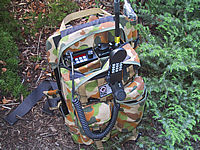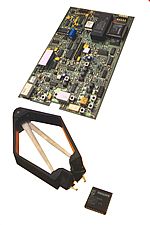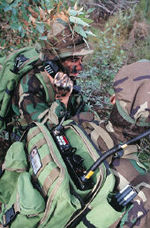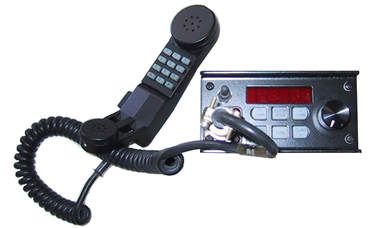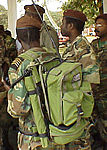|
HF Frequency Hopping Radio From the Vietnam War to contemporary applications History of Frequency Hopping The need for secure radio communications dates back to the Second World War. During the War, both sides routinely utilized COMINT (Communications Intelligence), which primarily involved the interception of radio traffic. The ability of the British and American Forces to routinely intercept high frequency (HF) radio traffic meant they were able to 'crack' Germany's ENIGMA Radio Code, thus giving them a tremendous tactical advantage. Despite this fact, it was not until 30 years later that effective security measures were instigated. It was the Vietnam War that drove the development of radios incorporating ECCM (Electronic Counter Counter Measures). The Vietcong (VC) were expert at using radio traffic deception. They were known to record US radio traffic requesting air support in bombarding VC positions, then later (once the area was occupied by US forces) the messages would be retransmitted with disastrous consequences. It is against this backdrop that the requirement for a secure combat net radio emerged - ie. one that could not be intercepted or jammed. In the late 1970s the US put forth a tender document for a system known as SINCGARS (SINgle Channel Ground and Airborne Radio Subsystem). This radio was to provide immunity to eavesdropping and jamming by utilizing frequency hopping. The transmitter and receivers within the network (net) would change frequency many times a second whilst maintaining perfect synchronization automatically. In response, ITT Cincinnati (US), RACAL (UK) and Grinaker (South Africa) all developed VHF combat net radios incorporating frequency hopping. The RACAL and Grinaker frequency hoppers appeared in the market first, as a result of private funding. Unfortunately, the US model lagged behind, given that it was hamstrung by a painfully slow military procurement process. Frequency hopping on HF was not developed until some time after the first VHF models appeared on the market. Implementing frequency hopping on HF proved to be more difficult, given that HF covers four octaves of frequency as opposed to just one octave at low-band VHF. Furthermore, the propagation medium at HF is much less stable and predictable; the instability of the ionosphere can result in quite dramatic changes in phase delay. Product Concept Conventional fixed frequency radios are designed to transmit and receive on a single channel. This fact makes them vulnerable to interception and jamming. Interception is the unauthorized monitoring of radio traffic, whereas jamming is the deliberate disruption of communication, by operating a transmitter (jammer) on the same frequency as the radio traffic. Whilst scramblers and speech encryption devices may provide some degree of resistance to the threat of interception, they are ineffective against jammers. Frequency hopping is the only effective counter measure to both forms of electronic attack. A frequency
hopping radio is capable of hopping its operating frequency over a given
bandwidth many times a second (with HF radio, this bandwidth is limited
due to changes in propagation). Synchronization data is periodically transmitted
and decoded to ensure that the transmitter and receiver keep hopping in
synchronism with each other, thereby maintaining intelligible communication
even when under severe electronic attack. In a frequency hopping network, one station is designated as "Master". This station (usually a base station radio) is responsible for transmitting the synchronization data to the "Slave" stations (usually manpack radios). There can be any number of Slaves within a network.
Whilst frequency hopping alone is an extremely effective measure against jamming and other unwanted transmissions, the introduction of two features in particular have further improved the security of HF frequency hopping nets. These are "Smart Hopping" (also known as "Intelligent Hopping") and the use of single sideband (SSB) for voice transmissions. Smart Hopping: Smart Hopping enables avoidance of blocked channels. The radio net, via the Master, acquires information on the signal strength of each channel within the hop set. All members of the net receive this data automatically and consequently blocked channels are avoided. Continuous updating occurs in order that changing band conditions are accommodated. Use of SSB for Voice Transmissions: In order to mount an electronic attack on a frequency hopping net, an ECM (Electronic Counter Measures) Unit must first identify the presence of the hopping net within a defined frequency range. The ECM Unit must then attempt to determine the geographic location and either crack the hop code or follow and jam the transmissions.
The HF spectrum is typically very crowded and contains a myriad of signals and noise (refer Fig. 1). Therefore, in identifying a hopping net, the task is made easier if the transmissions have a coherent or characteristic signature. For example, frequency hopping radios that use digitized voice transmissions employ PSK (Phase Shift Keying) or FSK (Frequency Shift Keying). Such transmissions are well defined and readily identifiable (refer Fig. 2).
These differences become more apparent when observing transmissions over time (using a spectrum analyzer set to Peak Hold or Accumulate). With a digitized hopper, the hop channels are easily identified since the output is nearly constant (refer Fig. 4). In comparison, the hop channels of an SSB hopper are more difficult to identify, since on many channels there is no output due to the voice cadence (refer Fig. 5). Synchronization transmissions, which often employ FSK, may appear as discrete line spectra (also refer Fig. 5).
Other Important Features Relating to HF Frequency Hoppers Aside from security against interception and jamming, there are a number of other features that should be considered with respect to HF frequency hopping manpacks. These include (but are not restricted to) the following: Actual Field Performance: Actual performance in the field is subject to many variables, some of which are controlled by external factors (such as sun-spot activity, ionospheric conditions, terrain and electrical interference). However, the specification of the radio system itself is also critical. Key factors, which will improve the field performance of an HF frequency hopping manpack, include radiated power (affecting the quality of transmission), receiver sensitivity and third order intercept (affecting the quality of reception), and power consumption (affecting operating time). These are described in more detail below:
Size & weight: The size and weight of an HF manpack is also critical, as it will frequently be used whilst on foot, over long distances. Early HF manpack radios weighed more than 10kg (for the radio alone) - without the tuner, antennas, battery, chargers and backpack. Thankfully, manufacturing technology has improved significantly and now the average weight of an HF manpack radio is around 2.5 to 3kg. The smallest HF manpack radio available on the market is the HF-90 from Q-MAC (Australia), weighing just 1kg! Refer to the Case Study at the end of this article.
Ancillaries & Options: Another consideration should be the availability of radio ancillaries and options. A good selection of antenna systems (to suit different applications) is paramount. The ruggedness of the battery system and availability of various chargers are also important factors. Most HF manpack radios also offer a variety of other options such as data capability, CW (morse-key) mode, Selcall (Selective Calling) and ALE (Automatic Link Establishment). Mechanical Aspects: The vast majority of HF frequency hopping manpacks meet Military Standard 810E. Whilst this specification ensures mechanical robustness, it does also carry a high price tag. When considering a particular application where HF frequency hoppers are required, 'fitness for purpose' should be the overriding consideration with respect to the mechanical construction. Serviceability is also an important factor. Some manufacturers quote MTTR (Mean Time To Repair), which can be a helpful indicator.
Of course, price is also a very important factor when deciding on a suitable HF frequency hopping manpack. This can vary depending on the particular model and the options/accessories required. However, generally speaking, HF frequency hopping manpacks range from around US$15,000 to US$25,000 per system. Some newer models available on the market do sell for as little as US$5,000 to US$10,000, without compromise to performance. Frequency Hopping in a Modern Context Many changes have occurred, with respect to HF frequency hoppers, since their introduction shortly after the Vietnam War - the most obvious being the introduction of new design technologies. With the advent of SMD (Surface Mount Device) components, manufacturing processes have become more reliable and the size of radios have reduced significantly. Furthermore, due to the use of integrated circuits and SAW (Surface Acoustic Wave) technology, made available by the computer, satellite and cellular telephony boom, manufacturing costs of newer models have decreased significantly. However, it is not only the design technologies that have changed over the years. Buyer behaviour, as well as the end-user base, has also evolved. Trend Toward Purchase of COTS Equipment: Most Military/Defense establishments around the world are now starting to question the need for expensive Military Specification equipment and instead considering 'fitness for purpose'. The result is a definite trend toward the purchase of COTS (Commercial Of The Shelf) equipment, particularly for non-combat applications. Most commercial equipment has already undergone the scrutiny and the competitive pressures of the commercial market and is therefore quite suitable for military applications. In many instances, manufacturing quality and mechanical robustness is improved considerably to service dual markets - both civilian and military.
A number of HF manufacturers have responded to this trend, releasing ruggedized commercial-grade HF manpacks for military use. However, only Q-MAC (Australia) has released such a manpack incorporating military-grade frequency hopping. Refer to the Case Study at the end of this article.
New Applications for HF Frequency Hoppers: Unfortunately, improvements in technology have also benefited hostile militants and insurgents. The major Japanese HF radio manufacturers (eg. Kenwood, Icom and Yaesu) offer low cost amateur HF units that can be modified in a trivially simple fashion to obtain full HF frequency coverage. Using these units, militants can monitor and jam strategic HF communications, as evidenced during the war in Bosnia. This use of EW (Electronic Warfare) has meant that Peace-Keeping Forces around the world have had to equip with HF frequency hopping radios, to ensure secure communications. With the reduction of radio manufacturing costs and the release of appropriate COTS systems, many third world and developing countries are also equipping their forces with HF frequency hopping radios. Such sets had been previously 'out of reach' due to the incredibly high costs involved. The factors
mentioned above have also lead to the use of HF frequency hopping radios
by a number of larger aid/relief organizations. Many such organizations
would otherwise be seriously compromised in their operations, through
interception and jamming of radio traffic. This trend is likely to continue,
with some of the smaller NGOs (Non Government Organizations) also finding
themselves in similar situations.
|











